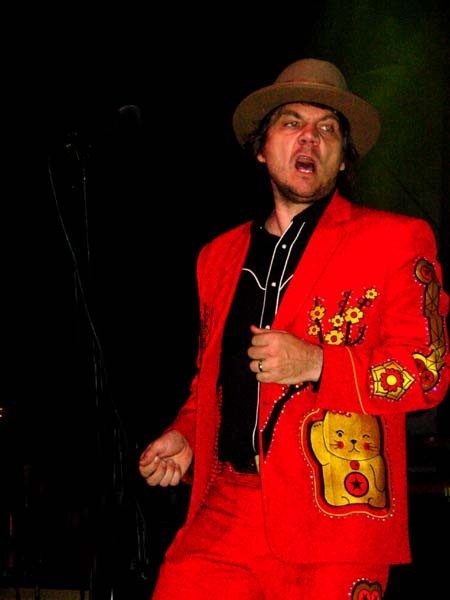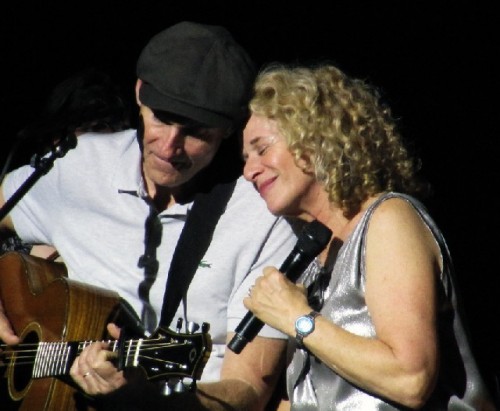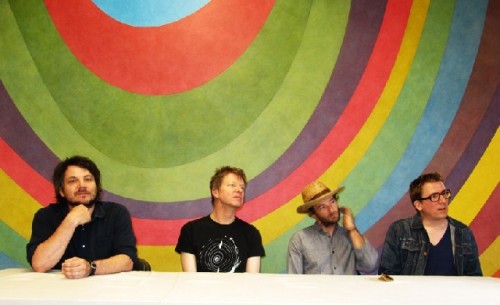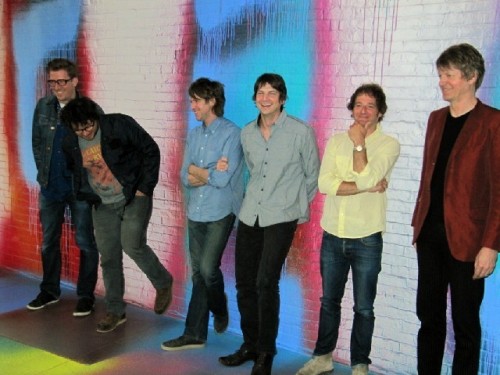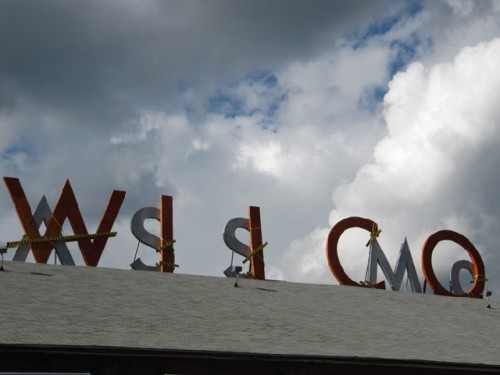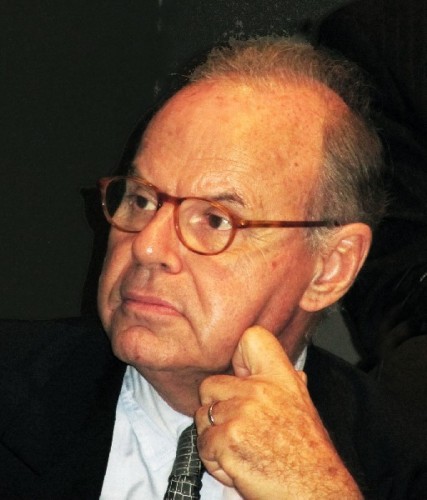Mass MoCA's Joe Thompson 4
Impact of Wilco's Solid Sound Festival
By: Joe Thompson and Charles Giuliano - Mar 01, 2012
Charles Giuliano Mass MoCA was founded, with State support, on the concept of bringing cultural tourism to hard pressed Northern Berkshire County. A recent study by Williams College estimates that based on an annual budget of $6 million the museum brings $16 million to the region and has been responsible for creating some 200 plus jobs. As a journalist I have questioned the extent of the involvement of Mass MoCA with the city of North Adams and its commitment to fostering economic development.
As I have previously posted, for example, when you were developing the LeWitt project wouldn’t it have been a no-brainer to put one of those works on the side of a building in downtown North Adams? Over a period of time by placing site specific works through the city it would have the gradual impact of spreading the MoCA campus from its 17 acre confines into the city itself. It would have the ability to further merge the identity of the museum with the city/ community which hosts it. No visit to Mass MoCA would be complete without also seeking out major pieces in the downtown area.
When visitors follow the map to find the other works spread through the city they would park and explore the downtown area. Perhaps have lunch then visit the shops and galleries. That would likely bring more revenue into the city.
Imagine, for instance, if the signature upside down trees near the entrance of the museum had a version that ran down the center strip of North Adams.
With the upcoming Canadian show this summer there will be aspects of the project with downtown components.
Joe Thompson We’ve done that.
CG How do you expand Mass MoCA beyond its campus?
JT Eight or nine different times we’ve done that. There have been adjunct shows. Sometimes as a part of the downtown arts initiative (Downstreet). Sometimes on our own.
CG That may be. But what about something like those upside down trees? Or a major contemporary work sited somewhere?
JT That would be beautiful. Charles, I think it’s a great idea. One thing at a time. We opened. The next ten years we were fully engaged in trying to keep the doors open. My belief first and foremost was that we had to do strong exhibitions. Strong performing arts events. Make sure we could open the doors on the next Monday morning. Try to bring as many people to North Adams as we could. That’s job one to us.
Job two was to develop our commercial campus and attract as many businesses and keep as many businesses as we could in the area. Because those are important things. The study that you refer to really focuses on Mass MoCA as a cultural entity. It leaves off Mass MoCA as a commercial development entity. Which adds another X million dollars a year to it.
Those two things were first. We simply did not have the band width. We did many things in rifle shot ways to reach out. To bring visitors here and to downtown. To support MCLA and others. To support Jonathan (Secor) and his projects. And we are happy to be part of that. Pleased that the college and others were picking up the reins on that actually. It was heartening to see.
CG Wilco.
JT Wilco spills over a little bit.
CG That was a stroke of genius. I don’t know if it was yours or theirs. That was a game changer.
JT Yeah. Wilco. In the same way as LeWitt it’s a sign post. Of what else could happen. Like LeWitt it’s special. Super high quality with a very interesting aura around it. The kind of people who follow Wilco are very interesting. They happen to cross over wonderfully with the art that we show. They are interested in what’s going on in the galleries. That threshold moment occurs when you go from holding a beer in the courtyard to going into the museum.
CG It was great how you promoted that. Encouraging the fans to explore the museum. As well as the works that Wilco members created and displayed in the galleries.
JT That was Glenn Kotche the drummer.
CG I think the photographs are still down stairs.
JT We just took them out. We showed their wonderful, hand made, silk screen posters. We still have Glenn Kotche’s “Fly on the Wall” sound installation. That’s what’s playing in the walk way to the LeWitt. At the time he didn’t announce it because the album hadn’t come out yet. Background noises, vignettes. “Fly on the Wall” were sounds recorded during the making of the album.
CG How much extra work and pressure did the Solid Sound Festival represent for your staff? In addition to all their other duties and responsibilities they had to take this on. I saw them out there in t shirts pitching in. The final day Richard (Criddle) was driving around picking up the parking signs around town. It seems that your staff was pushed to the limit.
JT It’s a great staff. This staff is talented and hard working as long as the program and project is good enough, interesting enough, counter intuitive enough. Intellectually engaging enough. High enough quality. There’s virtually nothing they can’t or won’t do.
CG Let’s speculate. You developed Joe Thompson Field with a stage at one end. You created the inner courtyard stages. Wilco is not coming this summer. Could there be other festivals now that you have the infrastructure and programming template?
JT We’re all ears to it. The quality of Wilco and the quality of their demographic fan base. It’s people who appreciate innovative music. I love rock ‘n’ roll.
CG I saw you having a good time at Jeff and Jane (Hudson).
JT Yeah. I do love rock and roll. Are we going to do another Bonaroo? No that’s not likely. That’s a huge rock festival that attracts tens of thousands of people.
CG You could do a jazz, blues, folk or blue grass festival.
JT We had a small, feeler, blue grass festival last September. You’ll see that coming up. We’re going to grow that this year. We’ll triple the size of that this coming September 21st. There’s no reason we can’t do one or two very selective events. We have the Bang on the Can festival. Of course it’s very rarified.
CG Could you take on a film festival?
JT We proved a couple of things. The town can absorb a good size crowd without straining. We had 5,000 people extra.
CG So you are saying there were 1,000 local participants and another 5,000 from out of town.
JT I’m guessing there were 5,000 who came in from the outside. North Adams soaked them up. Parking was not a problem. There were no Tanglewood-like dense, hard, traffic issues. There may have been fifteen or twenty minutes when a show got out but the traffic was nothing. The lodging industry was able to absorb it. The restaurants. The question is finding the right programming partners. At the end of the day we’re an art museum.
CG Looking at the figures it seems that you pretty much live from year to year. Taking on the Solid Sound Festival was a large financial commitment. Looking at the 2009-2010 tax returns there is a figure of some $850,000 for land development. Is that the cost for Wilco?
JT In the budget that you were looking at that was probably the figure for cleaning and remediating the boiler and power house. That was a big environmental remediation and cleanup and demolition.
CG You have talked about having considerable startup costs for Wilco. The festival has to exist for four or five years to start to break even.
JT Yeah. Absolutely.
CG So there was risk taking.
JT Oh yeah. I love our partners in it. Wilco the band. Tony Margherita Management which manages the band. They’re out of Northampton. They’re fantastic people. Alex Crothers from Higher Ground Entertainment. A music promoter up in Burlington. A fantastic collaborator and co partner. Those are things you don’t find that often in that business. They’re good people. They didn’t treat Mass MoCA, or staff, or our audience as if we were in a farmer’s field. They were in town in a museum and they were very respectful. They were engaged and lively. I loved that they exploited our assets but were respectful.
Wilco is coming back to play a concert this summer in late July or early August. That shows you something.
CG Was it mostly scheduling?
JT Yes. They’re in the midst of a tour. In the aftermath of their new album. It’s not the week in North Adams which was the problem. What a lot of people don’t realize is that the reason that festival is so good is because the band members themselves program it. They are picking the music. Picking up the phone and calling their friends. They spend a lot of time thinking about those three days. It takes weeks.
CG Is it in the contract to have it every year? Is it more logical to have it every other year?
JT I have no idea.
CG Is there a point where you tap out or over expose the idea?
JT I don’t know. We purposely left it open. The first year we promised each other to consider doing it a second year.
CG You were very evasive when I asked you about that.
JT We promised each other that we would talk about it. At the end of the show.
CG So that was real?
JT Absolutely real. We didn’t know. They didn’t know what it would feel like. We then decided that we wanted to do a second one right away. This year it’s about time. It’s as simple as that. They’re busy. This is the time to reap the harvest of that glorious new album. ‘The Whole Love.’ Get it. It’s fantastic.
CG You are still relatively young; one would say at mid-career. Can you ever see moving on from Mass MoCA? Are the head hunters looking at you? Are you going to die here with your boots on?
JT For awhile you couldn’t leave gracefully. Every day was a true adventure. Just how we were going to get it to the next week.
CG For how long?
JT I would say until 2007.
CG Then the bottom fell out.
JT That’s what’s so ironic. Right when the bottom fell out was when we launched our campaign. We had the goal of coming up with $15 million in endowment. Which we have done. It’s not all paid in yet but it’s coming in. By the end of this year we will have achieved that. The commercial real estate has reached a nice occupancy level. We’ve done all the expensive renovation work so now we can collect the leases. Our audience has grown nicely. Not dramatically but nicely. We’ve gone from 90,000 to 100,000 a year to now up to 120,000 to 125,000 a year.
(When Mass MoCA opened there was an increase for attendance at the Clark Art Institute. Similarly when the Clark completes it Tadeo Ando designed expansion it is anticipated that its increase in visitor capacity and programming will implement an uptick for MoCA attendance. The Clark has secured a building on the MoCA campus which is yet to be developed. It may well tie in with the Clark’s programming which will further advance synergy between the very different museums. These possibilities are on hold until the Clark completes its current expansion.)
If you were to call the American Association of Museums (AAM) and say, here is a museum with a $6 million plus annual budget, what kind of endowment should they have to be financially stable? They would open up their book of good museum practices and probably say a number like $30 million for endowment. $35 million would be the right level for endowment. So we have a lot of work left to do. When I think of it where could you have a platform like this?
A lot of my colleagues spend a lot of time working on grants in which they try to equate the work in the museum with arts and culture, to community redevelopment, and being part of their neighborhood. Your criticism not withstanding Mass MoCA has had a fundamental and direct connection to the life of its community. It’s brought people like you here. There are places to go out and eat. And yes, we can all find plenty of things which we wish were a lot better. It’s a much improved townscape which we live in now. Compared to 25 years ago. I remember what it was like. That kind of ramrod connection between us as arts workers and museum workers and the lives of our neighbors is direct here and very rewarding.
And we still have 200,000 square feet of space to develop.
CG In addition to being a critic I am also fascinated by cultural institutions. Here in the Berkshires we have been involved with reviewing their programs but also reporting on their issues and challenges. So it gives me a very different perspective when engaging in a conversation such as this.
When David Ross was the director of the ICA we had numerous dialogues about programming and development. I had attended the museum’s exhibitions when I was a teenager in the 1950s and started writing about the ICA in the late 1960s. I have also known and interviewed every director of the Museum of Fine Arts from Perry Rathbone to Malcolm Rogers. I worked in the Egyptian Department of the MFA for two and a half years in the early 1960s. So I have a long association with and understanding of museums.
When I was talking with David Ross while The ICA was on Boylston Street, what do you think the annual attendance was?
JT 150,000?
CG 20,000 to 25,000.
JT Wow.
CG Attendance spiked during the Mapplethorpe show. (“The Perfect Moment” during its two month run at the ICA in 1990, the last stop of a multi city tour that started at the Washington Project for the Arts (WPA) in 1989, drew 75,000 visitors. There was a prayer vigil outside the museum.)
JT You raise a good point. If you look at platforms and museums that do the kind of work that we do here. Take away museums that have great modernist collections like the Walker, MoMA, the Whitney. Look at the museums of contemporary art in Miami, Houston, Cleveland, Cincinnati, Chicago, Los Angeles, Boston less so, with the new building the ICA is at a different level now. If you do a quick look at all the major Metropolitan areas all around the country, look at their visitation levels and compare Mass MoCA to them, we are in the hunt. We are up in the top five, six, seven nationally. Consider that our population base here is 20,000 not 200,000 or three million.
CG Looking at the Berkshires as we do in our coverage. Which includes reviewing programming but also speaking with artistic directors and creators, as well as looking at budgets, attendance and box office it seems that there is an interesting commonality or ceiling. The theatres seem to top off or cap at a similar level for attendance and budgets. Your box office is about a million. That’s a figure that is remarkably close in range to Williamstown Theatre Festival, Barrington Stage, Berkshire Theatre Group and Shakespeare & Company. All of whom reported strong seasons last year.
Jacob’s Pillow ran near to capacity so there doesn’t seem to be much of an expansion slot. Like WTF it is a seasonal program and is in that sense locked into a timeframe and footprint. Of course Tanglewood is the wild card here. As Tanglewood goes so go the Berkshires. They have an older audience. In the Shed for their classical concerts looking around we are in the median age group. They have done well with James Taylor and limited rock/ populist bookings but are reluctant to carve into their commitment to the conservative programming of the traditional BSO.
So I am asking if we have hit the ceiling in audience capacity and programming? Is there still an upside for Mass MoCA and cultural tourism in the Berkshires? Are we maxed out?
Tanglewood needs to morph into the present. I brought a friend to Wilco in the Shed. We had a blast but it was comical to see the little old lady ushers trying to cope with a rock audience. Tanglewood hadn’t a clue about security and crowd control. By staying rooted in the past, Mark Volpe and Tanglewood are a log jam holding up the growth and progress of the Berkshires. Look at the impact of a Fourth of July weekend with James Taylor selling out three shows in the Shed. Consider what that does for the hospitality and restaurant industry. Last year there was a spill over for Barrington Stage and its hit Guys and Dolls. The Colonial missed the boat by ‘not competing’ and opening Tommy for a too short run a week later. It is a mistake they are not repeating this year when they open with Chorus Line head to head with Barrington’s Fiddler on the Roof.
Last year when you ran the Solid Sound Festival in June was it a coincidence that Tanglewood went head to head with you on Saturday night with Earth Wind and Fire? They are very different acts with different audiences but it is interesting that Tangelwood wanted a slice of the pre season rock action. Was that a coincidence? Is the success of the Solid Sound Festival a threat to Tanglewood? Are you moving in on their turf and franchise?
JT Let’s not forget that Wilco came to Tanglewood first.
CG And would have come back if Tanglewood were more accommodating. Which is how they fell into your lap. Because Wilco likes being in the Berkshires. They have a real fan base here. Looking around the Berkshires we seem to have reached a threshold. What will it take to break through that?
JT It’s one of the reasons I became involved with and am a supporter of the 1Berkshire effort. It consolidates the marketing.
(1Berkshire is an independent not-for-profit corporation charged with strengthening and growing the Berkshire economy using an innovative collaborative approach among the region’s business, tourism, economic, and creative development efforts.)
CG So you essentially agree with what I am saying.
JT Without casting aspersions on any single institution I think that the Berkshire as a region are deeply undersold. If you compare the Berkshires to Napa Valley, Santa Fe, The Hamptons, other areas which have an unusual density of high end, world class cultural institutions, and beautiful outdoor natural resources, there is no doubt that, by far, the Berkshires are the most interesting of all of them. We have the real thing here. It’s undeniably a beautiful place. If you look at the aspirations of the institutions, and their programming, you just don’t find it outside of a major urban area.
That’s my thesis. Then, given that, given the strength of the underlying assets of the region, as a community of cultural institutions, lodging industry, chamber of commerce. As the Berkshires, we have not, up to now, done all that we can to bring more people here.
CG On top of all of your other responsibilities what increment of energy is left to put into that effort?
JT There was a big community volunteer effort that went into 1Berkshires. A year and a half ago and I worked quite hard on it. I continue to work but putting much less time in than I did. Because I’m a believer in it. Putting the Berkshire Visitors Bureau, the Berkshire Chamber of Commerce, what’s left of the Berkshire Economic Development Corporation and Berkshire Creative. Four, big, county wide promotional agencies, literally, under one roof, and under a conjoined, not merged, collaborative construct, under a single branding effort, will have great benefit. I’m a believer in it for all of the reasons you have pointed out in your preamble. There’s plenty of room to grow. As you point out some of them (arts organizations) will reach natural capacity. Particularly those who have constrained themselves to July and August.
CG Of course a wild card is The Clark. Although it is out of the mix this summer which may negatively impact overall visitation in Northern Berkshire County.
JT Watch the Clark. Tanglewood has been relatively stable in its visitation. In the same period of time the Clark has grown from an annual attendance of 90,000 to 200,000. It could conceivably go well beyond that once they have parking asnd visitor services. When the Tadeo Ando expansion is complete. For us Wilco is just one of 70 performing arts events which we give each year.
CG With Wilco not returning with the Solid Sound Festival this summer it seems you are not filling that slot with other programming. The grass will grow on the Joe Thompson Field.
JT We’re going to play softball this year.



